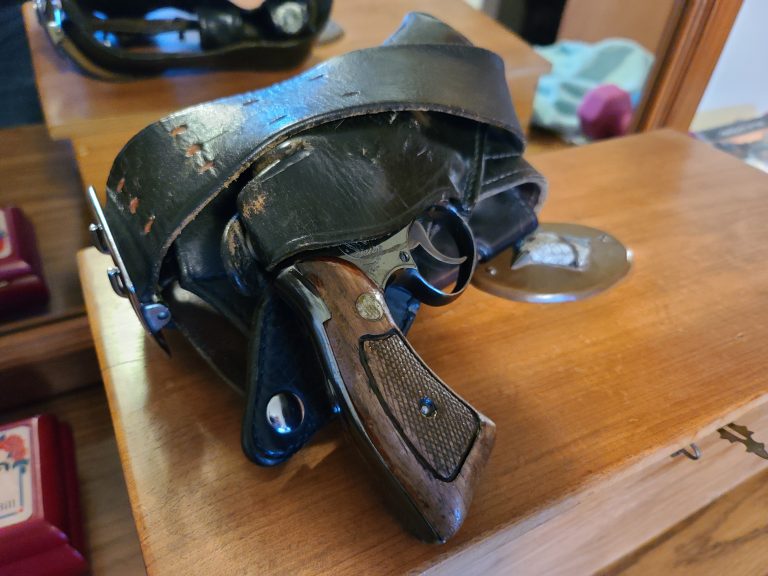This week saw the addition of a new permitless gun-carry state in the U.S.
Alabama officially passed the policy into law on Thursday. In doing so, it became the 22nd state with a permitless or, “Constitutional carry” regime.
Alabama was not the first state to pass a permitless-carry bill out of the legislature this year, but it wasted no time becoming the first to sign the measure into law. Governor Kay Ivey (R.) signed the bill just hours after it left the state assembly. And with her signature marked a new turning point in the realm of gun-carry politics: more states now have permitless gun-carry regimes than any other type of policy.
22 states have permitless carry standards where any adult who can legally own a gun can legally carry it without a permit. 20 states and the District of Columbia have “shall issue” permitting systems where anyone who obtains the required training and passes a background check must be given a concealed-carry permit. The remaining 8 states have “may issue” permitting systems where an applicant can be denied a permit if the issuing government official believes they don’t have a “good reason” to carry a gun even if the applicant has obtained the required training and passed a background check.
It’s easy to take for granted what an achievement this is for the right-to-carry movement given how quickly permitless carry picked up steam over the past few years. But a look back at the evolution of carry laws in the United States underscores how far things have come for gun-rights activists.
Back to the 80s
The modern right-to-carry movement is generally understood to have kicked off with the state of Florida’s adoption of “shall issue” gun-carry permitting in 1987. Florida was not the first state to adopt shall-issue licensing, and Vermont has even had permitless carry since its founding. However, a tidal wave of gun-carry law liberalization washed over the country in the years after its adoption by the Sunshine State.
This was the lay of the land in terms of carry regulations in the United States during 1986:
- Permitless Carry: 1 state
- Shall-issue: 8 states
- May-issue: 25 states
- No-issue: 16 states and D.C.
Pre-2010
By the end of the 2000s, shall-issue had become the dominant gun-carry policy nationwide. Additionally, the state of Alaska joined Vermont in adopting permitless-carry policies, and became the only state up to that point to switch to permitless carry from another system. Lastly, only D.C. and two holdout states—Wisconsin and Illinois—continued to refuse to issue carry permits under any circumstances.
Distribution of state carry policies as of 2009:
- Permitless Carry: 2 states
- Shall-issue: 37 states
- May-issue: 9 states
- No-issue: 2 states and D.C.
Present Day
As it currently stands, the concept of no-issue permitting has gone the way of the dodo. Each of the 50 states and D.C. at least nominally grants permits under certain circumstances. Though states such as Hawaii, New York, New Jersey, and Maryland rarely–if ever–actually issue them.
Meanwhile, with the addition of Alabama, states that do not require a permit under any circumstances now outnumber states with the old “permissive” standard of shall-issue that revolutionized gun politics just a few decades ago. Additionally, the population of Americans living under permitless carry now outnumbers those living in the eight states that still maintain a may-issue standard (which themselves represent a staggering 25 percent of the population alone).
Current Distribution:
- Permitless Carry: 22 states
- Shall-issue: 20 states and D.C.
- May-issue: 8 states
- No-issue: 0 states
Looking Forward
With already-passed permitless carry bills just awaiting signatures from the Republican Governors of Ohio and Indiana, the scales could very soon shift yet again even further in permitless carry’s favor. Couple that with the fact that serious legislative efforts are currently being made in Nebraska, Georgia, and Florida—states whose Governors have all said they support the policy and would sign a bill into law if given the chance—and there’s a very real chance over half of the states in the country could be permitless carry states by the end of the year.
In 1986, the number of states that refused to grant carry permits under any circumstances outnumbered states that granted them on a “shall-issue” basis two-to-one. Just a generation later, the policy landscape now has zero states that operate under a no-issue standard, and states without any permit requirements are set to outnumber the new policy floor three-to-one.
On top of that, a decision from the Supreme Court in the New York gun-carry case is due any day now. It appears poised to strike down the remaining “may-issue” laws. It could have serious implications for carry policy across the country.
Gun-carry policy has indeed come a long way in the United States.







2 Responses
While Hawaii would likely fall under the “shall issue” category, it is de facto “no issue” to this day, as evidenced by the fact that for more than 20 years, no ordinary legal resident of that state has ever been issued a carry license.
Hawaii is “may issue” today, but you’re right that they don’t actually issue permits in practice. THey’re probably the biggest outlier in that sense. Most “may issue” states actually issue at least some permits.